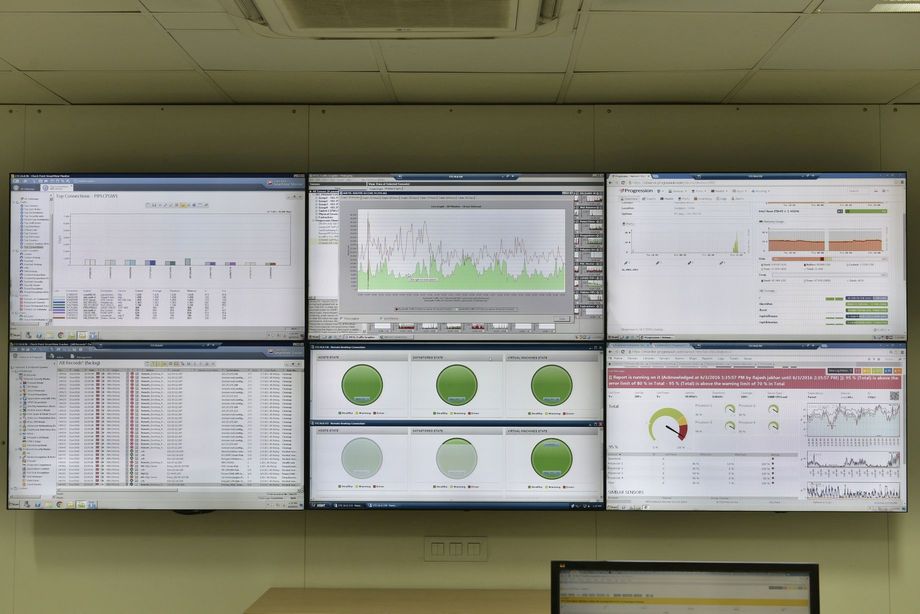In the last one and a half years, the way of business operations have changed drastically. Be it working from home, hybrid model, or even work from office, things have changed. Businesses have adapted to the fluctuations these unprecedented times have brought upon us, and one of the things that have given reasonable comfort & enabled business to focus on their core strength instead of managing IT has been Remote Infrastructure Monitoring & Management.
Remote Infrastructure Monitoring and Management
Remote infrastructure monitoring and management (RIMM) is the process of monitoring and managing IT Infrastructure (data center, networks, email, devices, storage, ERP, OS, security, servers, support, database, applications, telephony, and services) from a remote location, usually from a Network Operations Center, with the ability to perform remedial actions to enable continuous availability. The pandemic has only amplified the importance of having a single pane of glass to monitor your IT Infra anytime, anywhere.
CIOs and RIMM : According to CEOs’ top priorities for CIOs to preserve business amid COVID-19 2020 mentioned in KPMG CIO Survey 2020, when asked about the top three objectives for helping their organisations survive the COVID-19 pandemic, 37 percent of CIO respondents put digital transformation efforts and remote infrastructure management at the top of their list. Remote Infrastructure services have become a necessity for many organisations to sustain their business in and after a pandemic.
A recent IEEE CIO and CTO survey also revealed that 55% of respondents have accelerated the adoption of cloud computing and remote IT management.
How RIMM can benefit businesses?
Improved transparency and Lowered Operational Cost: Getting complete real-time performance and health analysis across all infrastructure layers and platforms, displayed on a single-pane view. RIMM’s web and application based dashboard hence ensures absolute transparency. A variety of remedial activities can also be carried out without disturbing your business operations from a remote location. The business will gain greatly from continuous service availability (monitoring and maintenance 24 hours a day, 7 days a week, 365 days a year), as your employees will be able to focus on the core business operations, thus helping in reducing operational cost.
Improved Uptime: Remote infrastructure monitoring and management technologies and cutting-edge tools ensure that all the key IT assets are in the perfect shape. 24X7 Network Operation Center (NOC) monitors and maintains system and server’s health and application hosted on it, ensuring high service time and improving uptime.
Round-the-clock support: Since IT Infrastructure is prone to malfunctions and malfunctioning at any time and in any location, businesses require a solution that ensures high availability & superior performance 24 hours a day, seven days a week. As a result, the demand & importance of Remote Infrastructure Monitoring and Management has been on a continuous rise, ensuring that businesses have effective monitoring of their IT environments and round-the-clock support.
Increases Productivity and Efficiency: Remote Infrastructure Monitoring and Management provides solutions based on the changing needs meeting stringent SLAs for the company’s business goals and hence makes the services more efficient and productive.
Conclusion
The world after the COVID-19 pandemic will be a new reality with a lot more digitally connected component. For example, cloud, network and Remote Infrastructure Monitoring and Management will enable enterprises to navigate the new reality of all of the changes. For businesses, digital transformation has become a key strategy. Today, achieving large-scale, expedited innovation is at the heart of digital transformation.
As found in a study conducted by Synergy Research Group, Enterprise spending on cloud infrastructure services is expected to reach about 130 billion dollars in the coming year, up more than 34% from the previous year. The demand for contemporary networking, storage, and database solutions is driving the growth of the cloud infrastructure services market.
CEOs, CIOs and CISOs should seize this opportunity to transform a crisis into a business opportunity, expedite the adoption of new digital transformation initiatives, assist businesses in identifying points of business breakthroughs and innovation, and promote healthy and sustainable corporate growth.
Progression is a globally awarded Managed Cloud, IT Infrastructure Provider, and Digital Transformation Partner to large and mid-market companies. Progression has been at the forefront of technology, delivering outstanding IT infrastructure services to its clients.
Progression delivers end-to-end Managed Cloud for mission critical applications such as SAP S/4 HANA & SAP ECC, Microsoft Dynamics (AX and NAV), Disaster Recovery as a Service (DRaaS) and Remote Infrastructure Monitoring & Management (RIMM). This is delivered through TIER 3+ Public Data Centers spread across India, including Progression’s own Data Centre and NOC at Gurgaon, India
In addition, Progression works with mid-market, large enterprise clients for their on-premise critical IT Infrastructure and services such as Managed File Transfer and Robotic Process Automation Progression designs, delivers, implements and manages clients’ Enterprise IT Infrastructure.



